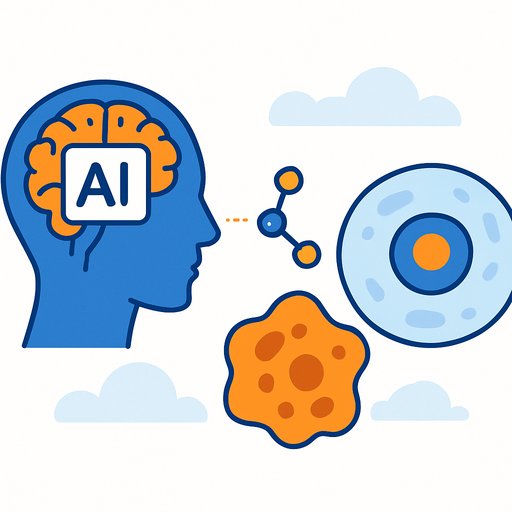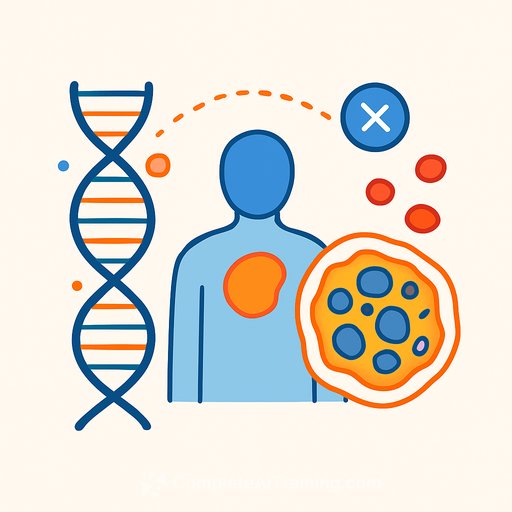AI milestone in cancer research: Google's C2S-Scale 27B generates a testable hypothesis, validated in human cells
Google and Yale researchers report that C2S-Scale 27B, a foundation model built on the Gemma framework, generated a novel hypothesis on cancer cell behavior that was later confirmed in human cell experiments. The prediction: silmitasertib can boost antigen presentation by nearly 50% under low interferon conditions, potentially making "cold tumours" more visible to the immune system. Sundar Pichai called it a major advance for AI-lab collaboration, and the model is now available for global use.
How the model reads cellular "language"
C2S-Scale 27B was trained on over a billion single-cell profiles and converts raw molecular signals into "cell sentences." That representation lets the model infer cellular context and communication patterns rather than regurgitate known associations. The output is not just correlation; it proposes mechanisms that can be tested at the bench.
The finding: silmitasertib may turn cold tumours detectable
The model proposed that silmitasertib increases antigen presentation under low interferon by about 50%. Antigen presentation flags abnormal proteins on the tumour surface, making cells easier for the immune system to spot. In human cell models, experiments supported the prediction, pointing to a possible route to address immune-evasive, therapy-resistant "cold" tumours.
Why this matters for research teams
- Moves AI from passive analysis to hypothesis generation backed by wet-lab validation.
- Targets a known bottleneck: tumours that evade immune detection despite available therapies.
- Suggests a concrete, testable pathway (CK2 inhibition via silmitasertib) and a specific context (low interferon).
Immediate next steps to validate
- Quantify dose-response for silmitasertib across interferon gradients in multiple cancer lines (hot vs cold phenotypes).
- Test antigen presentation changes via MHC I/II surface levels, peptide repertoire profiling, and downstream T cell activation assays.
- Evaluate combination strategies with checkpoint inhibitors and STING/IFN pathway modulators.
- Assess off-target effects, durability of response, and resistance mechanisms under cytokine variability.
- Extend from 2D cultures to organoids and in vivo models; stratify by tumour microenvironment and mutational burden.
What this signals for AI in biomedicine
This is a proof point that foundation models trained on large-scale single-cell data can suggest mechanisms that survive experimental scrutiny. It tightens the loop between computational inference and biological validation. The standard caveat stands: rigorous preclinical and clinical evaluation is required before any patient-facing application.
Open access and collaboration
Google has released C2S-Scale for community use, inviting teams to stress-test, extend, and benchmark the model. You can start exploring on Hugging Face or review code and issues on GitHub.
Practical notes for lab and data teams
- Data: Curate single-cell datasets with consistent QC and metadata for fine-tuning (cell type labels, cytokine context, treatment conditions).
- Metrics: Predefine success criteria (fold-change in antigen presentation, T cell killing, cytokine profiles) and preregister protocols where possible.
- Reproducibility: Share datasets, prompts, and model configs to allow cross-lab replication.
- Safety: Coordinate with tox and PK teams early for silmitasertib combinations, given pathway crosstalk.
Bottom line
An AI system trained on single-cell "language" proposed a mechanism to make cold tumours more visible to the immune system, and lab work backed it up. The door is open to larger studies, combination designs, and stratification by interferon state. With open access, the community can pressure-test and build on this signal fast.
Upskill your team on foundation models and bio-AI workflows: Explore curated programs by job role at Complete AI Training.
Your membership also unlocks:






